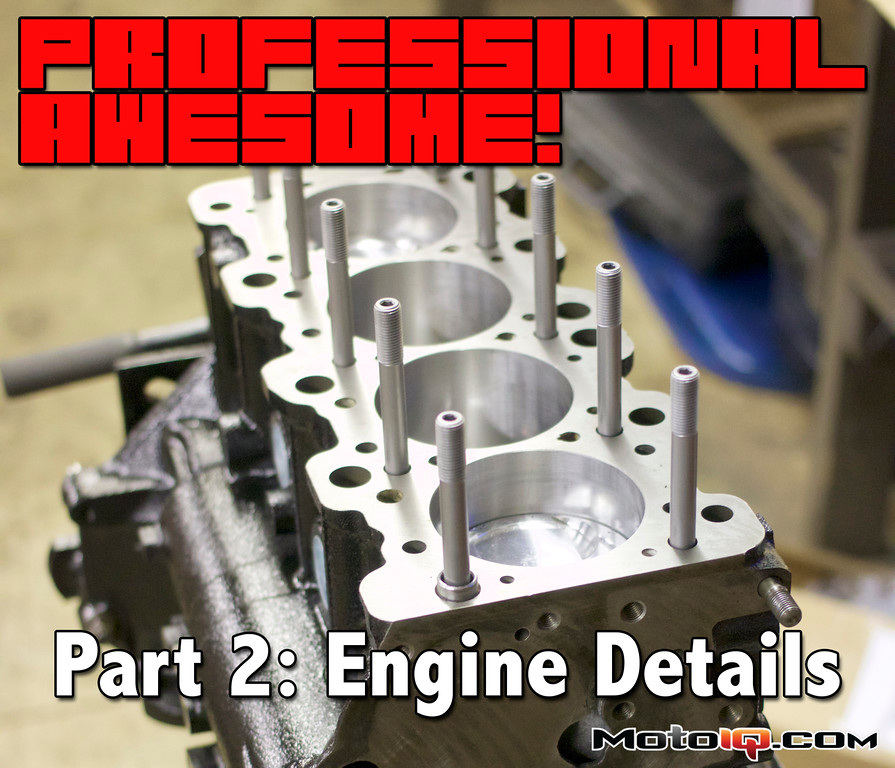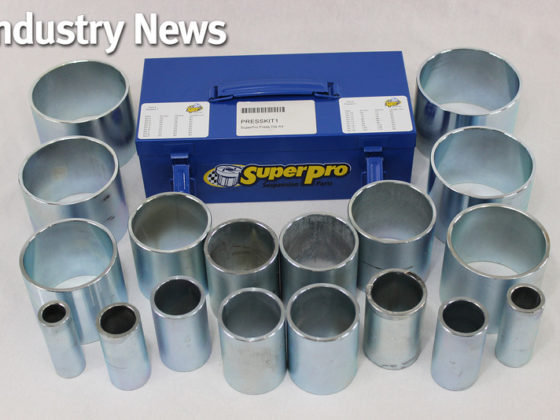,
With our previous engine we had chosen Manley’s billet 100mm stroke crank, paired with 150mm long rods and 9.0:1 compression pistons. This resulted in a very truck-like 1.5:1 rod stroke ratio. The goal was to maximize displacement, which ended up being 2.4L, in order to reduce turbo lag and to have a wide power band, but even though goals were met, this ended up not being a perfect solution for a time attack setup.
Running a 1.5:1 rod stroke ratio is great for the street, but poses a few issues on a race engine. Turns out, the lower the ratio, the lower the RPM that the engine breathes best at. This is due to the pistons' quicker acceleration away from TDC. Why does this happen? I’ll quote Dave Coleman here, “Peak piston speed occurs just after the rod is tangent to the crank. This tangent point occurs sooner on a short rod engine, meaning acceleration to reach that peak speed is higher.” This can be a good thing for making power down low, but there is a trade off with high end performance.
There are also a few additional details that don’t help on race engines like ours either. Lower rod ratios put the rod at steeper angles when traveling through its cycle. This puts additional side loads on the pistons which increases friction, bore wear, piston wear and ring wear. That’s a few too many wears for my taste and not so good on an engine that will spend most of its life at high RPMs. Additionally, lower rod ratios decrease dwell time, or the amount of time the pistons hang out at TDC and BDC. This is a good or a bad thing depending on how you look at it. Good, because it reduces chances for detonation, bad, because you don’t get as much work out of the combustion process. Considering we use E85 and monitor it very closely with a Zeitronix Ethanol Content Analyzer, we have very few fears of detonation, so the lower ratio isn’t the best news for us in this case either.
 New piston vs. old. The new design has a substantially shorter skirt due to the 12mm longer connecting rods. Notice the wear on the skirt of the older piston. We believe this was due to running too small of a rod ratio at high RPM regularly. There are some concerns that the shorter skirt hurts stability, but with less side loading, this shouldn't be an issue. We will be monitoring wear on components after each season to be sure and will update you accordingly.
New piston vs. old. The new design has a substantially shorter skirt due to the 12mm longer connecting rods. Notice the wear on the skirt of the older piston. We believe this was due to running too small of a rod ratio at high RPM regularly. There are some concerns that the shorter skirt hurts stability, but with less side loading, this shouldn't be an issue. We will be monitoring wear on components after each season to be sure and will update you accordingly. In this profile view you can see how much higher the wrist pins are located on the new pistons compared to the old setup. The wrist pin actually sits in the oil control ring land, requiring a bridge to support the oil control expander and rings. Our engine builder assured us this was quite common and very seldom causes issues. Both pistons are 2618 aluminum alloy and the new piston weighs 302 grams, old 346.
In this profile view you can see how much higher the wrist pins are located on the new pistons compared to the old setup. The wrist pin actually sits in the oil control ring land, requiring a bridge to support the oil control expander and rings. Our engine builder assured us this was quite common and very seldom causes issues. Both pistons are 2618 aluminum alloy and the new piston weighs 302 grams, old 346.Delving into the Manley catalog reveals a rotating assembly combination that is quite unique, that as far as I can find, no one else produces as a regular, in-stock item. It’s a 94mm billet crank, which isn’t too uncommon, but with 162mm rods that push the pin height of the piston up 6mm beyond what most aftermarket companies commonly manufacture for their “long rod” applications. What it creates is a unique, 2.2L displacement engine designed for higher RPM setups.
 Here we have the old rod on the left, new rod on the right. Both are Pro Series Turbo Tuff “I” Beam 4340 forged steel, with the old being 150mm in length and the new being 162mm. The new rod weighs in at 703 grams, the old 675. Each new rod/piston combo saves 16 grams which was a pleasant surprise!
Here we have the old rod on the left, new rod on the right. Both are Pro Series Turbo Tuff “I” Beam 4340 forged steel, with the old being 150mm in length and the new being 162mm. The new rod weighs in at 703 grams, the old 675. Each new rod/piston combo saves 16 grams which was a pleasant surprise!With this change in crank stroke and rod length comes a significantly higher rod stroke ratio. With the previous engine our ratio was 1.50 and with the new design it is slightly more than 1.72 which is right above the bottom limit of what is generally considered a good starting point for a performance build. Not as good as the AP1 S2000 2.0L F20C which has a ratio of ~1.82, but better than the AP2 2.2L F22C which has a ratio of ~1.65, both of which are geared towards higher RPM performance with redlines of 9,000 and 8,000 RPM respectively.
 Here's the fully assembled bottom end. Notice the knife-edged counterweights on the billet Manley crank. This reduces windage loss as the crank spins through the oil mist within the crankcase.
Here's the fully assembled bottom end. Notice the knife-edged counterweights on the billet Manley crank. This reduces windage loss as the crank spins through the oil mist within the crankcase.



